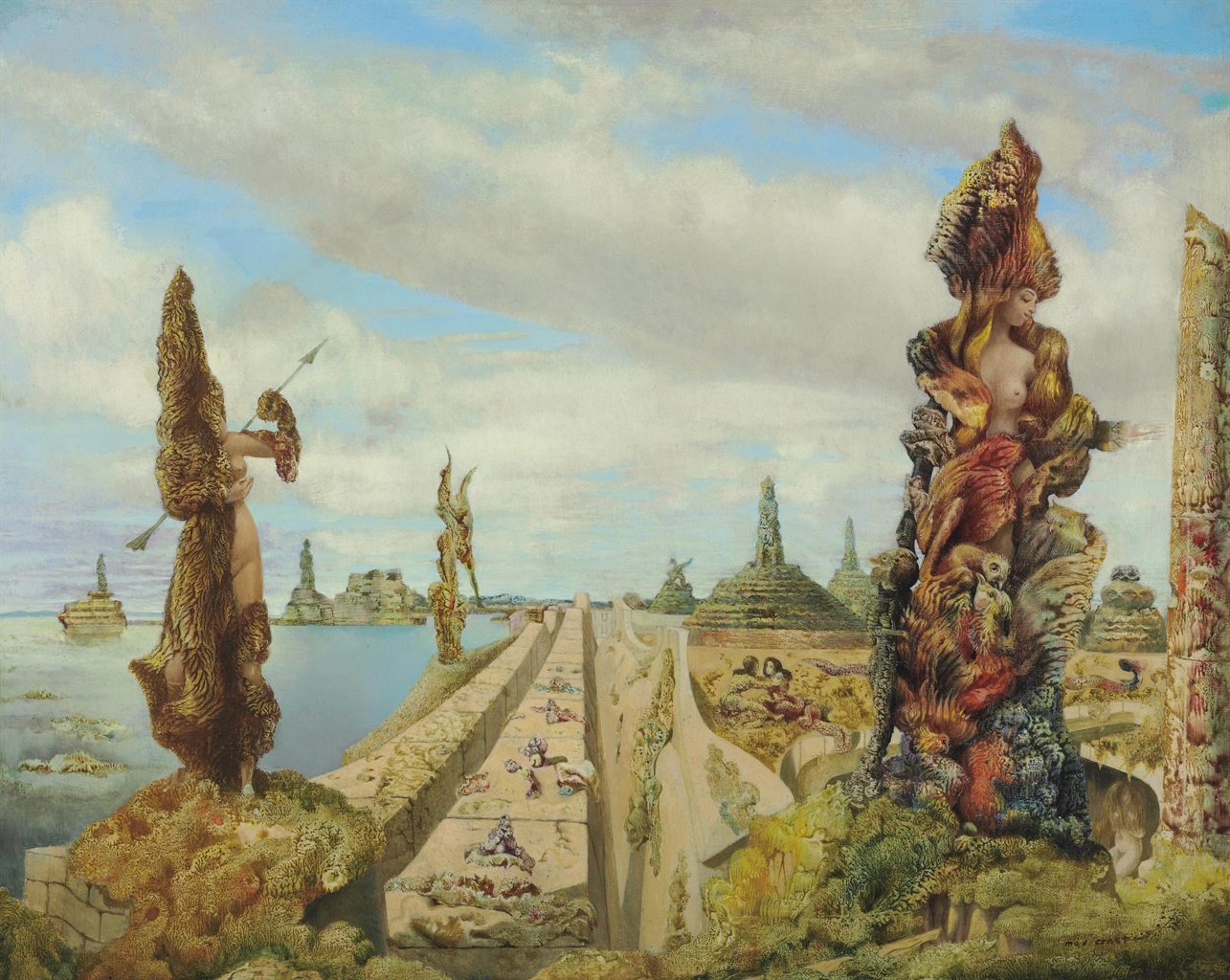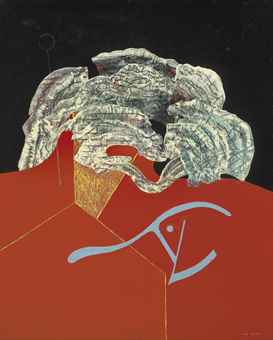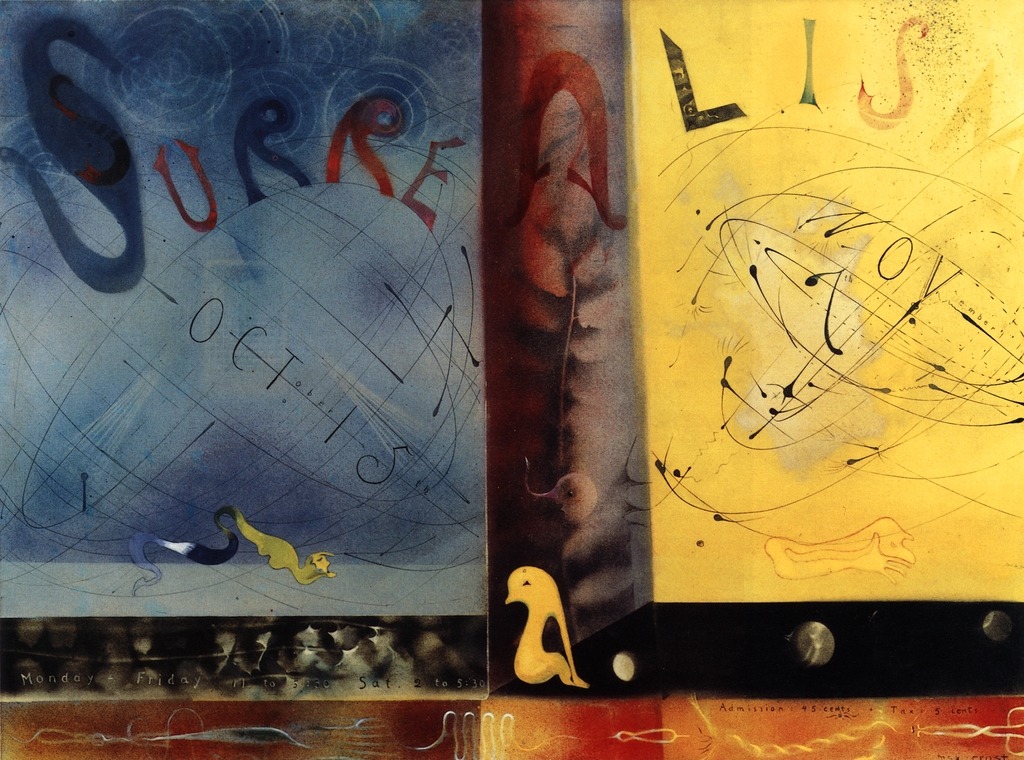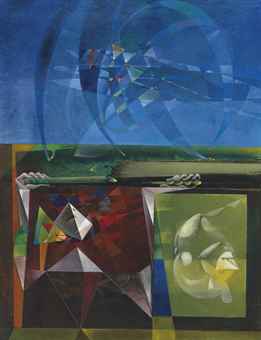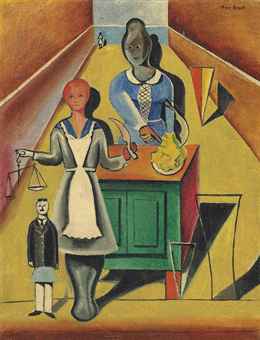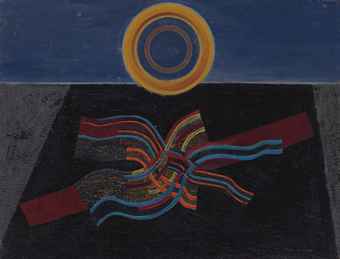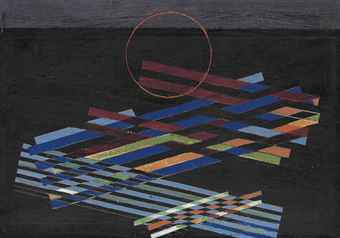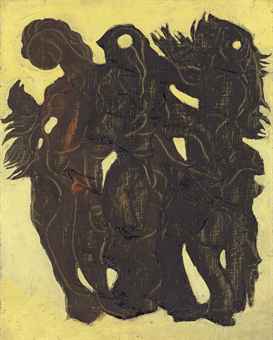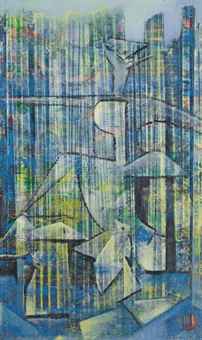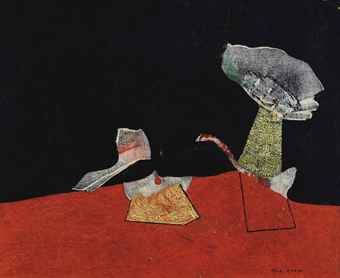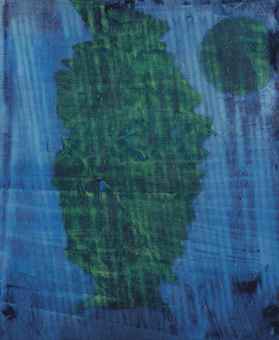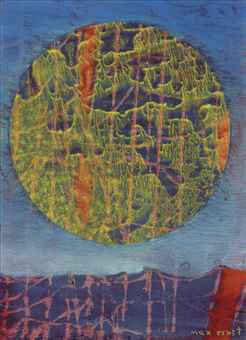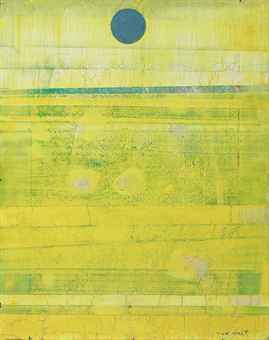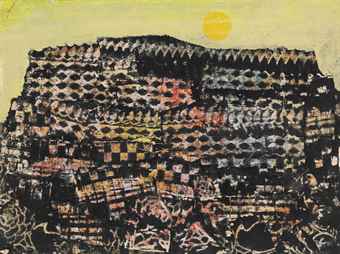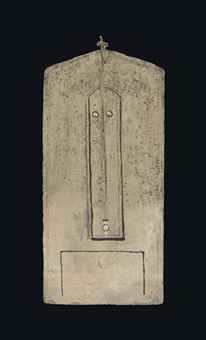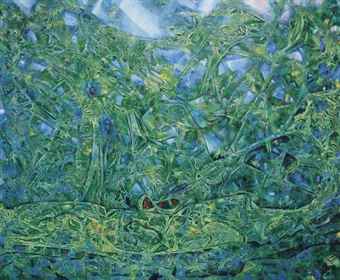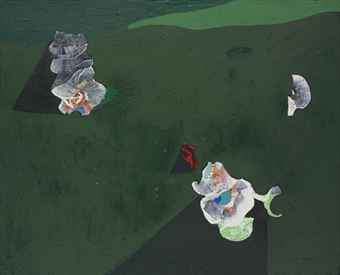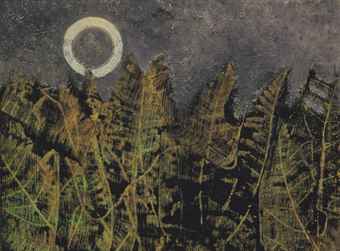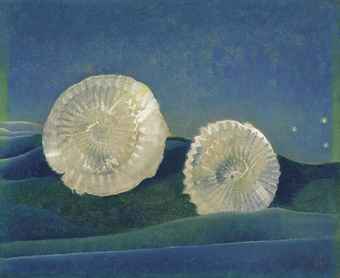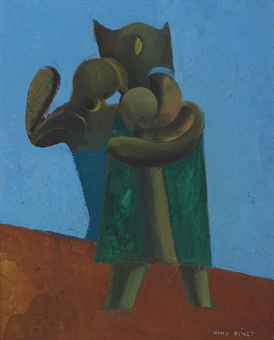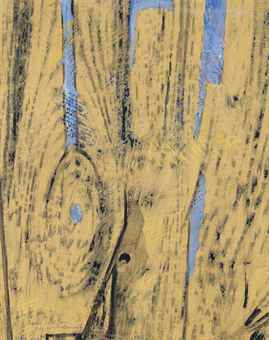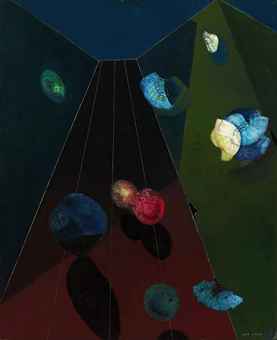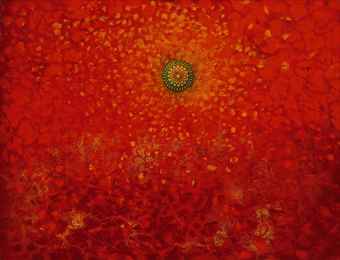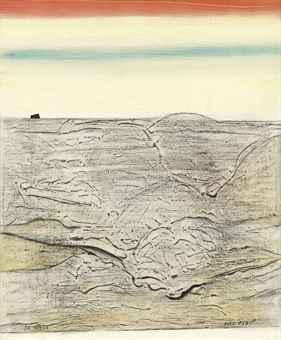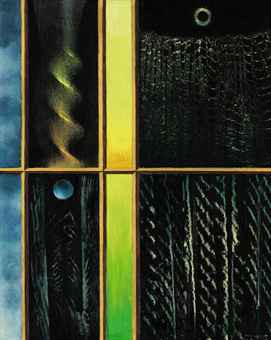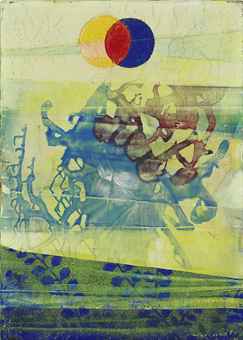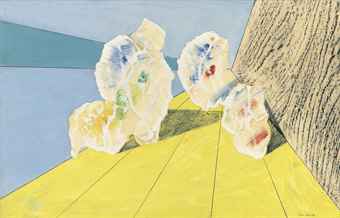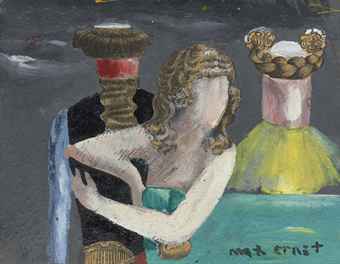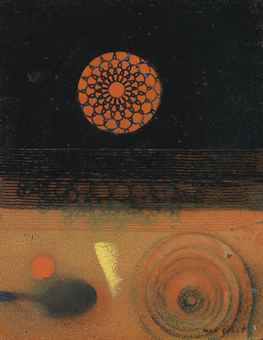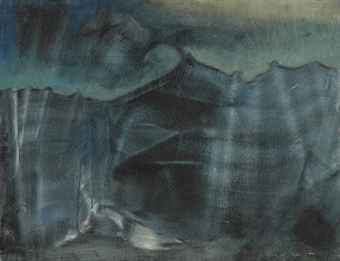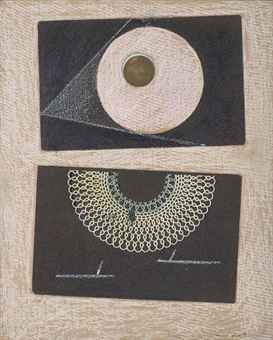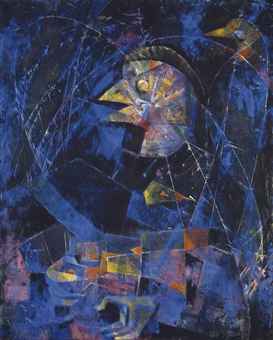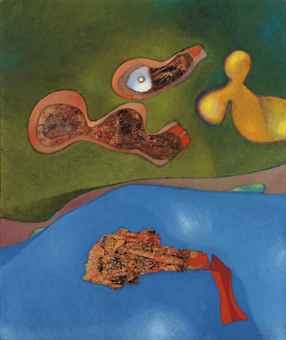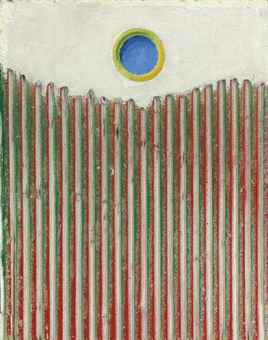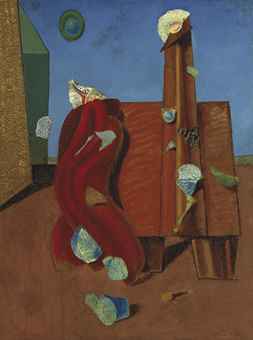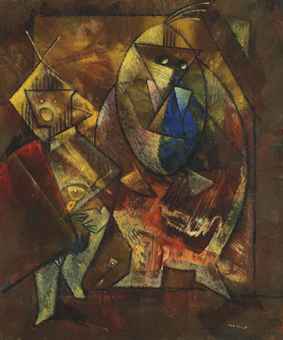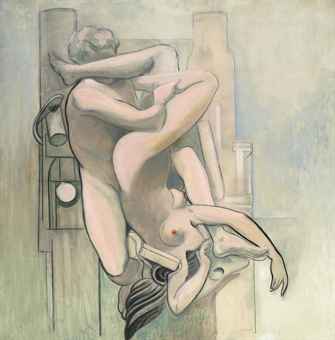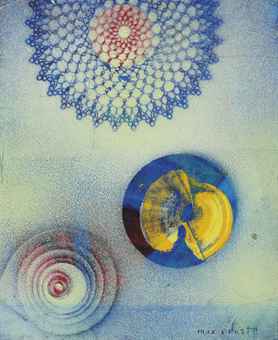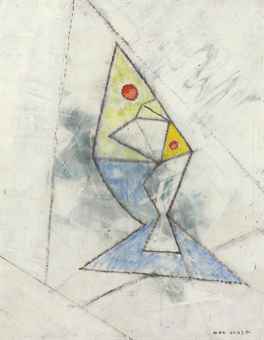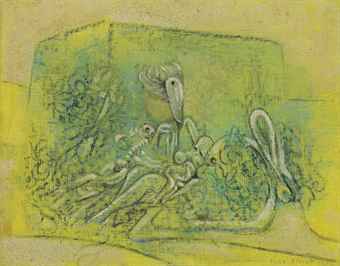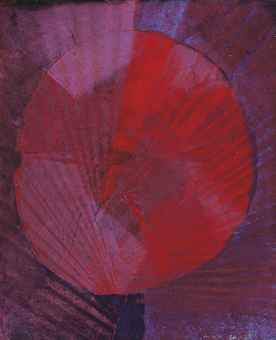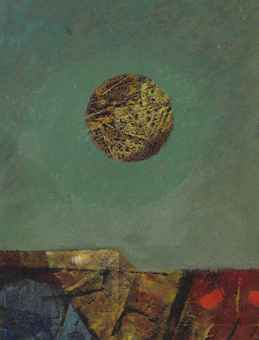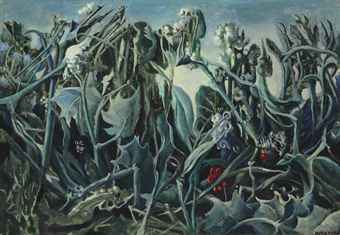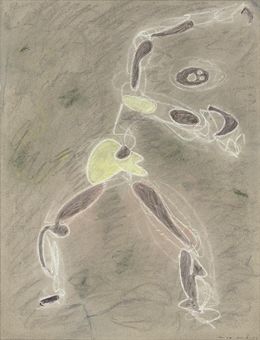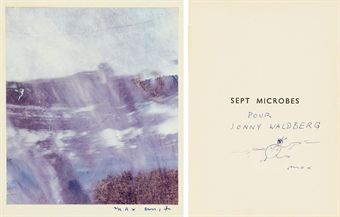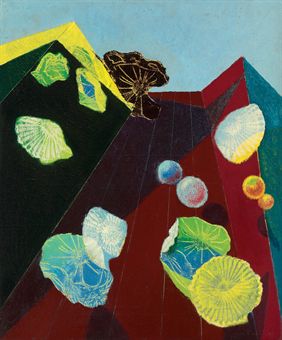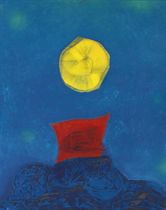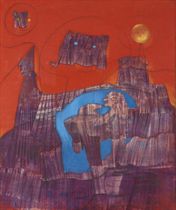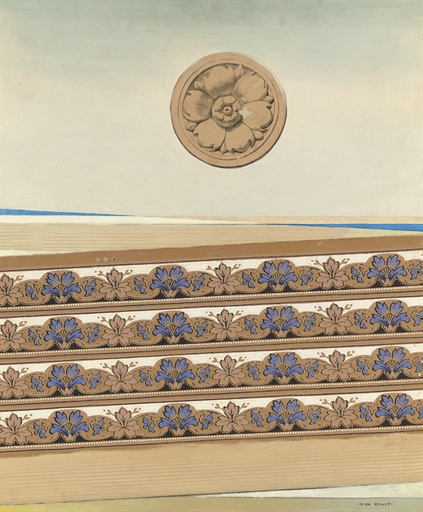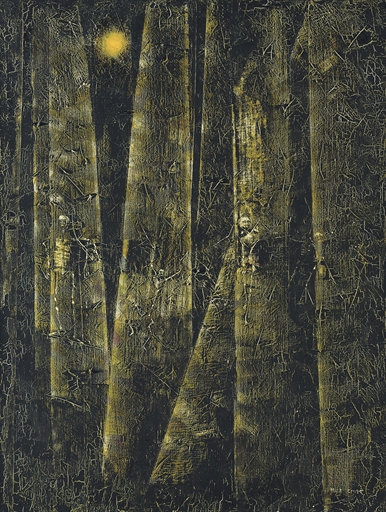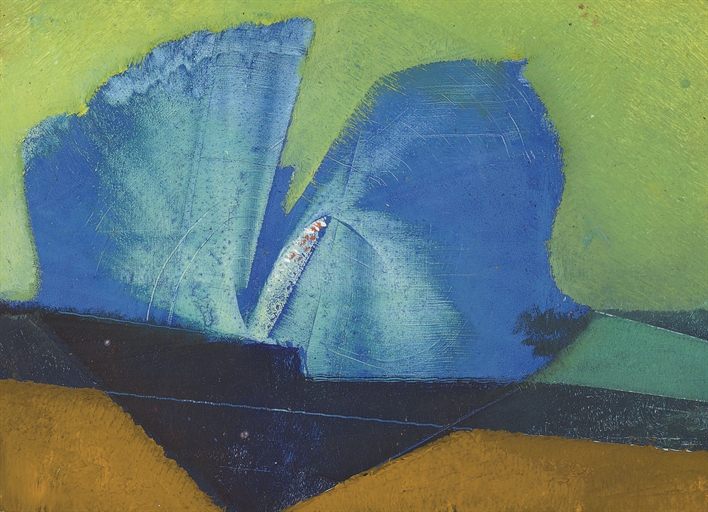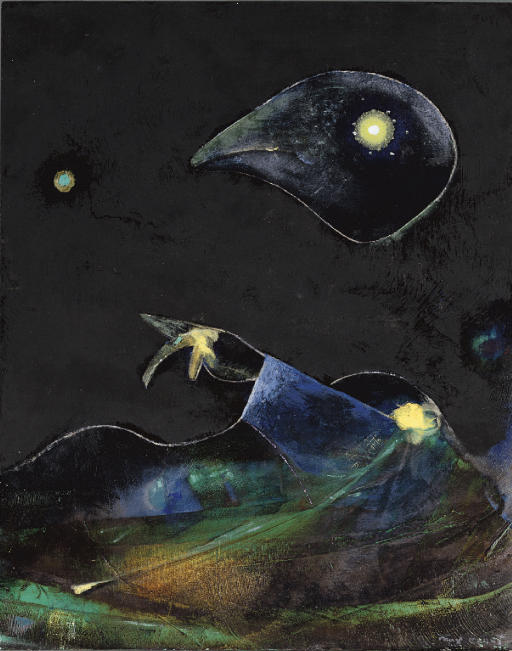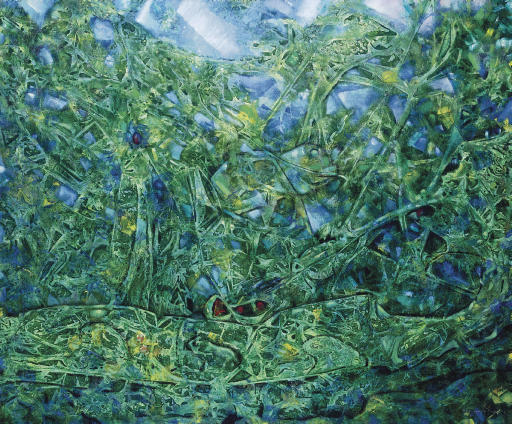Christie’s The Art of the Surreal Evening Sale on Tuesday 2 February 2016
A museum quality work and the cover lot of the sale, The Stolen Mirror by Max Ernst (1891-1976) is a surrealist technical tour-de-force, highly autobiographical and one of the artist's finest works (estimate: £7-10 million). This dream-like landscape was painted in 1941 at the pinnacle of Ernst’s oeuvre, when he was using the decalcomania technique of manipulating paint which he picked up from Oscar Dominguez. Many Surrealists tried the technique though Ernst was the only one to adapt decalcomania in a sustained manner to painting in oils on canvas. Rarely employing it as an end in itself, but rather as a means to create the unexpected, he became a master of the technique and achieved a remarkable degree of control over a fundamentally unpredictable process. The current record for a work by the artist, realising £10,283,175/ $16,322,500 at Christie’s in 2011, this painting once belonged to Edward James, one of the foremost early collectors of Surrealist art; it was later re-acquired by Ernst’s son Jimmy Ernst and descended through the family to the estate of Edith Dallas Ernst, from which it was last sold. Previous sale: http://www.christies.com/lotfinder/paintings/max-ernst-the-stolen-mirror-5493627-details.aspx
At auction for the very first time, having been hidden in a distinguished private collection for over half a century, Fleurs coquilles sur fond marin, 1928, by Max Ernst (1891-1976) is a large red and black ‘shell-flower’ painting in which the artist presents a mysterious but also distinctly natural landscape of the kind that had distinguished his early frottage works in his famous graphic series Histoire Naturelle (estimate: £600,000-900,000). A colourful and also highly painterly combination of flat, abstract and geometric form with broad grattage scrapings of paint used to form two amorphous but strangely organic structures reminiscent of shells, flowers and geological rock formations, Fleurs coquilles sur fond marin is a work that invokes a strange, abstract world full of biological magic and possibility.
Sotheby’s London Surrealist Art Evening Sale on 5 February 2013
Surrealism by Max Ernst (est. £1.5 -2 million)
was painted inNew York in 1942 a few months after the artist’s escape from
war-torn Europe. Ernst’s standing as one of the foremost Surrealist artists
prompted Duchamp to request from him a painting for First Papers of Surrealism,
the show that he was organising in New York. This exhibition, the first devoted
to Surrealism since the outbreak of war, focused on the work of Ernst, Duchamp,
Masson,Matta, Breton, Dominguez, Lam, Tanguy and many other artists who had
fled Europe from Nazi persecution. The work to be sold exemplifies the
innovative techniques of representation that Ernst was developing in New York,
and greatly influenced the next generation of American artists (it was among a
group of Ernst’s paintings from 1942 said to have been admired by Jackson
Pollock and Robert Motherwell) and would prove influential on the emergence of
Abstract Expressionism.
Surrealism was exhibited in the Max Ernst 2005
retrospective at the Metropolitan Museum of Art, New York.
Sotheby’s 2015
Sotheby’s 2014
Sotheby’s 2007
Sotheby’s 2015
Max Ernst
LOT SOLD.
389,000 GBP
Max Ernst
Sotheby’s 2014
Max Ernst
Estimate 150,000
—
250,000
USD
Max Ernst
LOT SOLD.
84,100 GBP
Max Ernst
LOT SOLD.
821,000 USD
Max Ernst
LOT SOLD.
43,750 USD
Sotheby’s 2007
Max Ernst
LOT SOLD.
1,059,200 USD Christie's 2013
Christie's 2012
Christie's 2011
Christie's 2010
Max Ernst (1891-1976)
On parle le latin
Pr.£657,250($1,070,660)
Christie's 2008
Max Ernst
born 1891 Brühl, Germany
died 1976 Paris, France
Max Ernst was born on April 2, 1891, in Brühl, six miles south of
Cologne, to Phillip Joseph Ernst, a teacher at Brühl's Institute for the
Deaf and Dumb, and Louise Ernst, née Kopp. The third of nine children
and the oldest son to live beyond childhood, Ernst was raised in a
well-to-do Catholic household. His father was an amateur painter who
encouraged Ernst to paint. In 1910 Ernst enrolled at the University of
Bonn, where he focused on courses in the history of art, psychology,
philosophy, philology, and literature. In the summer and fall of 1912
Ernst was actively engaged with the group of artists around the
expressionist painter August Macke and began writing art criticism for
the newspaper Volksmund in Bonn. A year later, Ernst exhibited
his work for the first time with Macke's group Die Rheinischen
Expressionisten (The Rhineland Expressionists) in Bonn and at the First
German Autumn Salon.died 1976 Paris, France
Max Ernst
German, 1891–1976
la bicyclette graminée...(The Gramineous Bicycle...), c. 1921
gouache and ink on teaching panel with ink inscription
74.3 x 99.7 cm (29 1/4 x 39 1/4 in.)
The Museum of Modern Art, New York. Purchase,1937
Digital Image © 2005 The Museum of Modern Art, New York. © 2005 Max Ernst/Artists Rights Society (ARS), New York/ADAGP, Paris
German, 1891–1976
la bicyclette graminée...(The Gramineous Bicycle...), c. 1921
gouache and ink on teaching panel with ink inscription
74.3 x 99.7 cm (29 1/4 x 39 1/4 in.)
The Museum of Modern Art, New York. Purchase,1937
Digital Image © 2005 The Museum of Modern Art, New York. © 2005 Max Ernst/Artists Rights Society (ARS), New York/ADAGP, Paris
Max Ernst
German, 1891–1976
Célèbes (Celebes) or Der Elefant von Celebes (The Elephant of Celebes), 1921
oil on canvas
National Galleries of Scotland
Max Ernst (German / American / French, 1891 - 1976)
German-French painter Ernst was born near Cologne in Germany. After studying philosophy at university he turned his attention to art, and became the leader of the Cologne Dada group in 1919. He moved to Paris in 1922 to work with the Surrealists, adapting the techniques of collage and photomontage for use by the group. He worked in a range of media throughout his artistic career, producing work that was irregular, experimental and highly imaginative. The Gallery has an excellent collection of his work, including eleven paintings and collages as well as drawings, prints and illustrated books.- Max Ernst
- Türme [Towers]
- 1916
- This is an early and transitional painting by Ernst. It reflects his interest in Cubism and also anticipates the works he made whilst part of the Cologne Dada group in 1919-20. The painting may represent an abstracted view seen by Ernst when he was stationed in Laon and Soissons in France during the First World War, in 1915-16. In the background of the painting a tall building with a steeple, possibly a church, can be seen. Shapes in the central construction suggest chimneys, windows and bricks. Critics have commented on the similarity of this work to paintings of towers by Robert Delaunay, whose work Ernst would have known.
- Max Ernst
- Hut in der Hand, Hut auf dem Kopf [Hat in Hand, Hat on Head]
- about 1919
- Ernst exhibited some of his early paintings with the Expressionist group. This painting shows the influence of Expressionism in the self-consciously naïve style and use of heightened colour. The disembodied, moustached man raises his bowler hat, only to reveal another underneath (the mark of the true bourgeois gentleman). A bird can be seen falling out of the tree at the bottom of the picture. Birds often appear in Ernst's work and were of significance to him because as a child his pet bird died on the same day his sister was born.
- Max Ernst
- Katharina Ondulata
- 1920
- Made while Ernst was the leader of the Cologne Dada group, this painting on printed paper is inspired by the Dada spirit of anarchy and confusion. It contains cosmic imagery (star constellations can be seen in the sky), and also alludes to the battle of the sexes. Both of these themes interested the Surrealists, who formed their group directly after Dada had disbanded. The full title of this piece is written along the bottom margin and refers to the 'mistress of the inn,' who would appear to be represented by the revolving sun on the left. The male is represented by a stick-like mannequin: his fuse is alight, ready to trigger his sexual desires.
-

- Max Ernst
- La Femme au parapluie [Woman with Umbrella]
- about 1921
- This small painting is closely related to collages in which Ernst combined elements from advertisements and patterns for women's clothing and accessories. Details have been incised into the paint with a pointed instrument. Ernst's emphasis on the rolled umbrella, high-heeled boots and tailored gloves is almost fetishistic. It also shows the influence of the German Symbolist artist Max Klinger, whose work Ernst admired. The painting has an aura of illicit sexual tension. Uncomfortably crammed into a small space, attention is focused on the girl's legs and skirt and the open door suggests a stolen view.
- Max Ernst
- Untitled
- 1921
- In many of the collages that Ernst made at the height of the Dada period, he cannibalised popular, and often outdated, manuals and magazines which were illustrated with engravings of machines, instruments, and appliances. Sometimes his intervention was limited, as here, to one or two additions to the main image, but the absence of any explanatory text released the inherent strangeness and absurdity of the original source. The central importance of bizarre juxtapositions to his collages, the way inanimate objects tend to be endowed with an obvious human presence, and the exploitation of illusions to strengthen the atmosphere of irrationality, are all devices which reflect the direct influence upon Ernst of the metaphysical paintings of Giorgio de Chirico and Carlo Carrà.
- Max Ernst
- Mer et soleil [Sea and Sun]
- Dated 1925
- Max Ernst
- Elle garde son secret [She Keeps Her Secret]
- 1925
- Max Ernst claimed that he began to use the technique of frottage after noticing the wood grain of some floorboards. Taking a piece of paper, he made a rubbing of the wood to produce patterns which suggested mysterious forests. In 1926, this work was also reproduced in Ernst’s book ‘Histoire Naturelle’ in which a variety of textured materials were used to create rubbings and inspire pictures. Ernst has created a sense of space in the drawing by placing a similar shape to the central leaf-form in the background to the left, and by adding a cast shadow on the right. This drawing is from an album of fifteen drawings, assembled together by Roland Penrose in 1936, and sold to fund surrealist publications. The album also contained works by Magritte, Miró, Dalí and Tanguy.
- Max Ernst
- Max Ernst montrant à une jeune fille la tête de son père [Max Ernst Showing a Young Girl the Head of his Father]
- 1926 or 1927
- This large work was painted while Ernst was working with the surrealist group in Paris, and seems to highlight his oedipal conflicts with his father - the Surrealists were fascinated with psychology and the theories of Sigmund Freud. The 'young girl' may be the artist's dead sister, in which case an incestuous triangle of father, son and daughter is implied. Ernst used a technique that he invented, called 'grattage' to create the forest. This involves the painted canvas being laid over a rough wooden surface and scraped to produce a rich, grainy texture. The large ring in the background represents the sun.
- Max Ernst
- Le Grand amoureux I [The Great Lover I]
- 1926
- The precise meanings of many of Ernst’s paintings are intentionally obscure. He was far more interested in poetic suggestion, mystery and ambiguity than in literal interpretations. This painting relates to another work called ‘The Inquisitor: at 7.07am Justice Shall be Done’. A comparison between the two paintings shows that the bowler-hatted man is holding a female figure, whose breasts are clearly visible, but whose head has developed into a curved shape. While the man emerges out of an imposing block-like structure, the small female shape he gently holds resembles a metronome. On the left of the painting, Ernst has used the technique of grattage to create texture.
- Max Ernst
- La Forêt [The Forest]
- about 1928
- The dark, mysterious forest is a common subject in German Romantic art and was one of Ernst’s own favourite themes. The forest held a personal significance for the artist, as he never forgot the childhood feelings of enchantment and terror induced by his first sight of the forests south of Cologne when aged just three. Ernst painted a series of ‘forest’ works towards the end of the 1920s, drawing on his fear and fascination to produce paintings in which the forest appears as a forbidding and impenetrable wall, hemming in the viewer and shutting out the world beyond.
- Max Ernst
- La Joie de vivre [The Joy of Life]
- 1936
- This is one of a number of so-called 'jungle' pictures that Max Ernst painted in the late 1930s. His paintings of forests and tangled undergrowth derive from the rich Romantic heritage in German art. They also symbolise the fears and suppressed desires of the human mind. Looking at the picture more closely, the title becomes bitterly ironic. This jungle is actually ordinary undergrowth grown to enormous proportions, dwarfing a sculpture of a woman and animal living together in harmony. Instead of a paradise, the scene is a nightmarish one in which giant praying mantises do battle with other monsters in the entangled undergrowth
